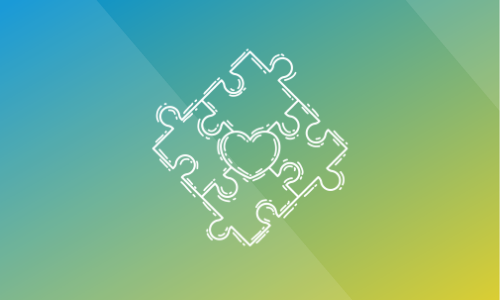Learning in Support of World Autism Awareness Day

Some of what we think we know about it may come from media sources – films like Rain Man or novels like A Curious Incident of the Dog in the Night-Time – or any other third-party sources we might have encountered. And while they might be effective representations of autism, they can hardly tell the full story.
In fact, Stephen Shore, an autistic professor at the Adelphi University in New York, said, “If you’ve met one person with autism, you’ve met one person with autism” – meaning that in the same way no two people anywhere are exactly alike, the same can be said for those on the autism spectrum.
What is autism and how can we learn more about it?
In some ways, it depends on whom you’re asking. Historically, autism was defined medically – a neurological disorder that affects things like communication, social interaction, and other behaviors.
There are a wide range of “symptoms” using this definition, including difficulty reading social cues and a desire for repetitive behavior, order, or sameness. It can also result in challenges and even an inability to communicate.
There’s high-functioning autism, where people are able to “fit in” to everyday society, as well as more “severe” autism, where individuals may have additional or intense support needs.
Using this definition, it’s estimated that around 25 million of us worldwide may be autistic.
However, more recently, the discourse has moved away from thinking of autism as an illness or condition. Rather, autism can be thought of as a group of shared characteristics that some people have among the infinite range of thinking styles that exist.
What we think of as “autism” are just the thinking styles you’ll find at the end of one neurocognitive spectrum. And even among those of us who are autistic, there are infinite different variations. No two autistic people exhibit the signs in the exact same way, just as no two people are ever fully identical.
So now, it’s not thought of as something that needs correcting, fixing, or curing. It’s just an example of one of the many different ways in which we are neurodiverse. It has its own strengths and challenges in the way that every aspect of a personality does.
Even if the representations of autism you were familiar with are accurate, they’re just one example of literally millions of individuals, all of whom think and act in their own ways. Still, society is typically set up in a way that’s designed to accommodate the “majority” of thinking styles – those not at the edges. Also sometimes known as the “neurotypical,” which can make autistic people feel somehow different, marginalized, or “other.”
Recognizing that is the key to autism awareness. Being inclusive of everyone, and not treating anyone as somehow lesser or weaker just because they think differently – this is how we can support the strengths in differences and accommodate the challenges.
A big part of that is learning more about autism.
New Litmos Training Content Coming to Support this Effort
At Litmos, we’re committed to learning with you and ensuring our community has the opportunity understand more about neurodiversity and related topics. That’s why we’ve created the upcoming Litmos Neurodiversity suite of training courses, due for release in Summer 2022. It’ll encompass some of the key language and terminology surrounding autism and other types of neurodivergence, and adjustments you can make to be more inclusive.
SAP also runs an Autism at Work initiative. You can find out more about that here: https://www.sap.com/about/careers/your-career/autism-at-work-program.html.
But ultimately, it’s incumbent on us to learn, without expecting to be taught, and to support, without trying to save.
With the new suite of courses, we hope to help you be an ally. Awareness is the first step.




